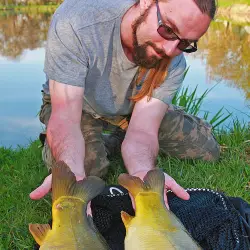Disclosure: Some posts contain affiliate links, which earn us a commission if you make a purchase through them. Positive Fishing © participates in various affiliate networks including the Amazon Services LLC Associates Program.
- Carp fishing is a major growth area for many tackle and bait companies
- Learn what are the best hookbaits to use when targeting carp
- Learn what variables impact the choice of bait
Modern carp fishing is the most popular fishing technique in Europe. The popularity of carp fishing continues to grow, not just in Europe but also in the United States. Every year, there are more new carp waters emerging and more anglers are taking their first steps in carp fishing.
Even after my 40 years of carp fishing, there is a continuous learning process. One of the main questions is: What is the best carp hookbait to use?
In this article, I will cover some of the most popular and most effective baits out there, that will give you an edge on your next carp fishing session!
What Are The Most Popular Hookbaits For Catching Carp?
There are so many options available to anglers from natural baits to artificial baits. Every location is different and everyday changes – what this means is that there is no single answer.
A carp angler needs various baits on hand to interchange when various factors differ each time we visit the bank. However, there are several that are a must to have available on every trip.
Sweet Corn
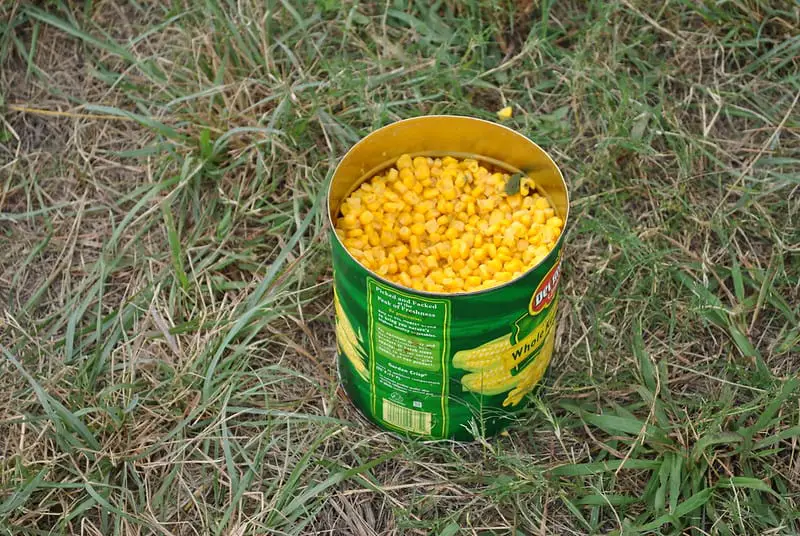
If you are new to carp fishing but not sure what bait to choose, then go for sweet corn. If you are planning to fish a lake for the first time and are not sure how to approach it, you should always take sweetcorn. If you are not certain what other anglers are getting success with, go with corn first!
Corn comes in a variety of options: from regular canned sweet corn that you can buy in your local grocery shop, to specially prepared corn in fishing shops. There is also an option of buying dried corn used for stock feeding – it is by far the cheapest option, but it takes some time to prepare it for fishing and is usually used only for chumming!
Sweet corn is my number one bait for carp fishing. It is rather inexpensive and easily available in every grocery shop, and carp love it!
Sweet Corn contains high levels of sugars that carp love, but also salt and amino acids that make it a perfect choice for carp fishing. Not to mention its bright yellow colour that visually attracts fish from a distance!
You can use it both for feeding and as hookbait; when you purchase it, try several brands and choose the one with the biggest kernels. I usually buy cheap sweetcorn from the grocery shop sweetcorn for feeding, and use specialized sweet corn from fishing shops as hookbait.
Tip: When selecting corn from the can, always pick the largest and full round kernels.
Dedicated fishing sweet corn has larger kernels, is tougher and lasts longer when attached to a hair rig, and is also boosted with various flavours.
Sweet corn is perfect for short fishing sessions, those around four to eight hours. Having a lot of sugar and amino acids that will spread through the water column, it quickly attracts carp – but also all other fish in the lake! Corn also has salt added to the can, by adding additional salt to the corn can have a very positive effect on attracting carp. You can read more on using salt as part of your fishing baits here!
To avoid the smaller fish, sweetcorn can be used as a combo bait added to a pop-up or boilie. This makes the bait large enough that the smaller fish may avoid taking your offering.
One final benefit of using corn is that you can easily add all types of glug and colourings to get even more versatility. Many anglers cover the kernels with a strawberry flavour or adding a glug is a very popular choice.
Tip: Rather than just normal canned sweetcorn you can also use the “creamed style” this is very sticky and adds another twist to using sweetcorn.
Artificial Corn
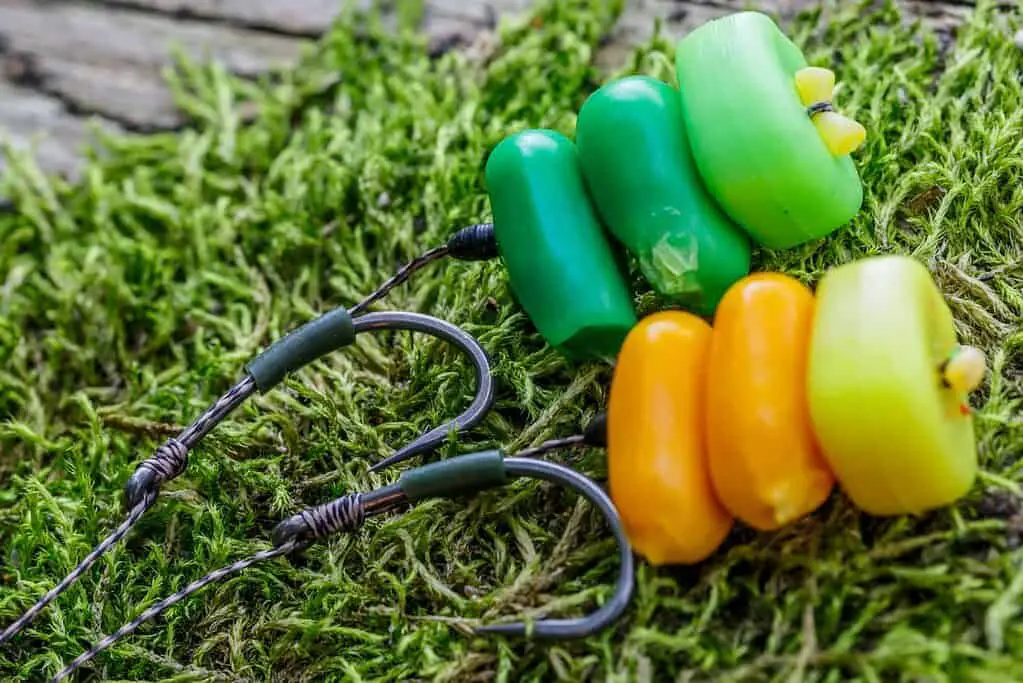
When talking about corn, every carp angler out there knows the frustration of constant alarm beeping and the insane amount of repeated casts due to corn being eaten by small fish.
To solve this, the fishing industry made artificial corn. It looks like real corn, smells like real corn, but is incredibly tough! Small fish will not take it off the hook, and you can enjoy the fishing without worrying if your bait is still on your hook.
It is a perfect choice for commercial waters with a large population of coarse fish. I recommend buying artificial corn from reputable manufacturers such as Enterprise baits or a cheaper option is the TPR fake corn, and they are far more efficient than many other cheaper versions.
Artificial corn is also available in white, green, pink, and red colours. Using a combination of two colours can be another great choice.
Tip: Corn is a fantastic bait to use as a combo bait with a boilie. Fixed on a single hair rig.
Tiger Nuts
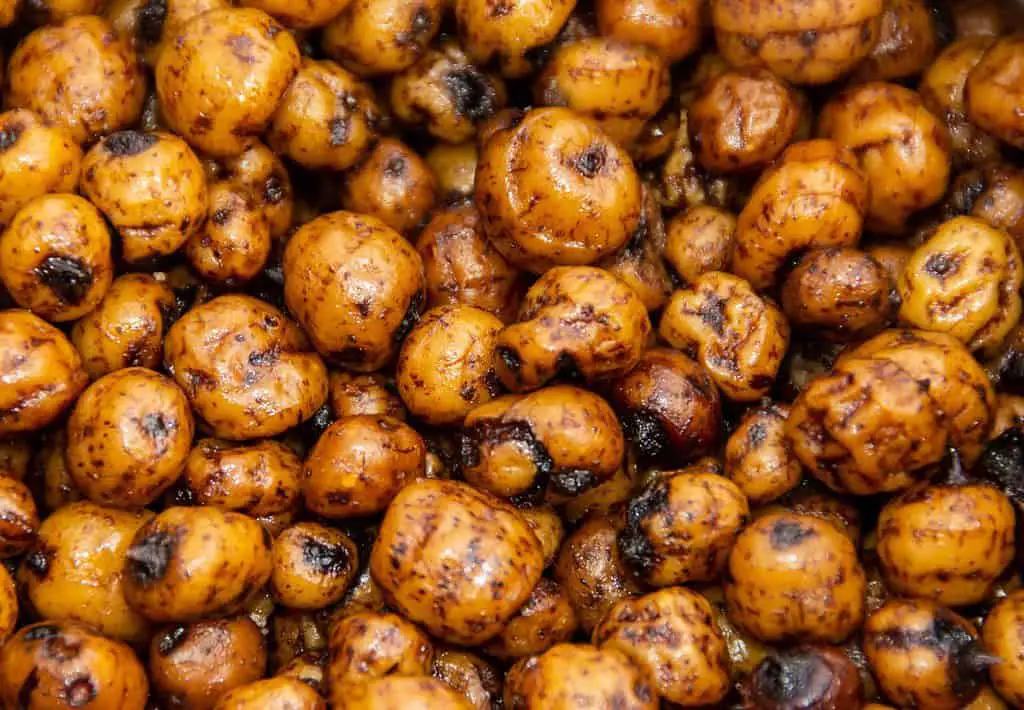
A lot of carp anglers do not recognize the potential of this awesome bait. The tiger nut is irresistible to carp, and this is something you should use to your advantage!
It is both good as bait and as an addition to your particle mix (especially combined with hemp). The starchy sugary taste makes carp just love the flavour of tiger nuts – so much that you can cast one rod with a single tiger nut without even feeding, and there are good chances carp will eat it! Also, it will not be harassed by smaller fish. It is tough and will endure long periods of fishing without changing baits.
When purchasing tiger nuts, you can either buy them dried or ready-made. I prefer buying tinned tiger nuts as they are ready for fishing straight out of the package, and you do not need a lot of them for fishing.
However, if you want to use dry tiger nuts, be aware it might be dangerous for carp if not prepared correctly! You need to soak the seeds for at least 24 hours. Then you need to boil them for 30 minutes, and let them soak for another 24 hours. Now they are ready for your carp fishing session!
Tip: Many fisheries have banned the use of tiger nuts. Please MAKE SURE you read the regulations at your fishery before using them.
Please read my in-depth review of Why are Tiger Nuts Banned from being used for fishing? to understand more about this controversial topic.
Pellets
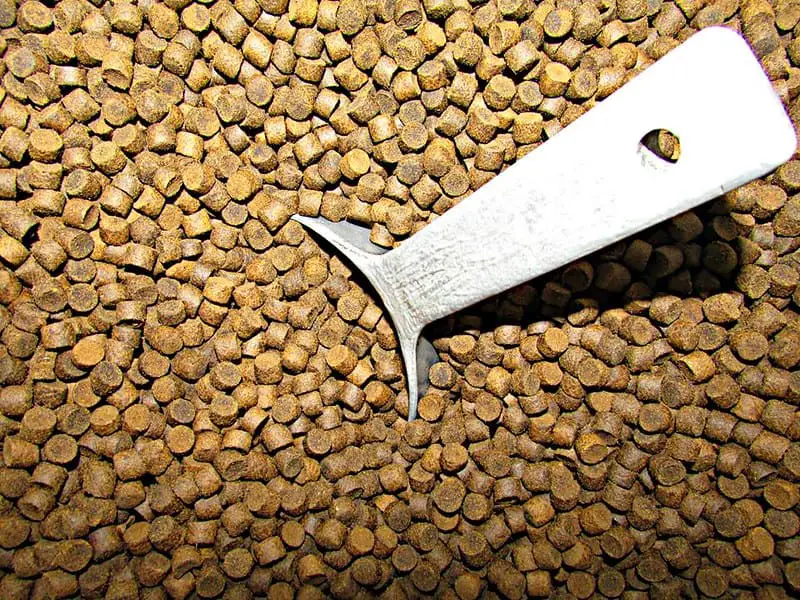
Personally, pellets were the most amazing discovery in my fishing career. Available in numerous sizes, textures, and tastes, they are a perfect choice for almost any type of fishing imaginable – and carp love them!
Pellets are widely available and come in many different sizes and flavours. For a hookbait, the most popular size is either 6 or 8mm for smaller carp and 10mm for larger fish. If you want to use larger than this, then typically anglers would use a boilie.
Tip: As a general rule of thumb, pellets are generally considered optimal at sizes 25% – 50% of the fish’s mouth width.
Micro pellets are most often used for feeding, they are 1 or 2 mm in diameter. These slowly melt in water and release a cloud of smell that carp find irresistible. But the best combo is using a pellet hook bait with a handful of pellets in a PVA bag!
There are a lot of pellets on the market, with halibut pellets being the most popular. When choosing your pellet, you need to know that this is man-made bait, and therefore its quality can vary a lot! Corn is corn, but one pellet can be totally different from another pellet when it comes to quality. I advise purchasing only pellets from proven manufacturers, as fishing with cheaper options may be the difference between catching or not!
Tip: In many private fisheries (day ticket or a carp fishing syndicate) the pellets must be purchased from the shop at the lake. This is to ensure quality pellets with the correct nutrition are being fed to the fish.
If you would like to learn more about fishing with pellets, then check out my in-depth guide on pellet fishing, including types of pellets, tips, and tactics on how to use them!
Bread
It might sound funny, but I love fishing carp with bread. It is cheap, easily accessible, and a perfect bait!
It does not comply with modern carp fishing tactics, as it is impossible to fish it with most of today’s rigs. But a loaf of bread, a lake with carp, and a light float setup can produce a lot of fun!
Bread is perfect for carp cruising the surface. Known as a floating crust, throw out some free offerings of bread to bring the carp to the surface. Carp will soon start reacting and taking the bread from the surface, simply present your bread flake in the same area.
This is best done with a free lining method (using no weights or floats on your line), you will catch a carp in no time!
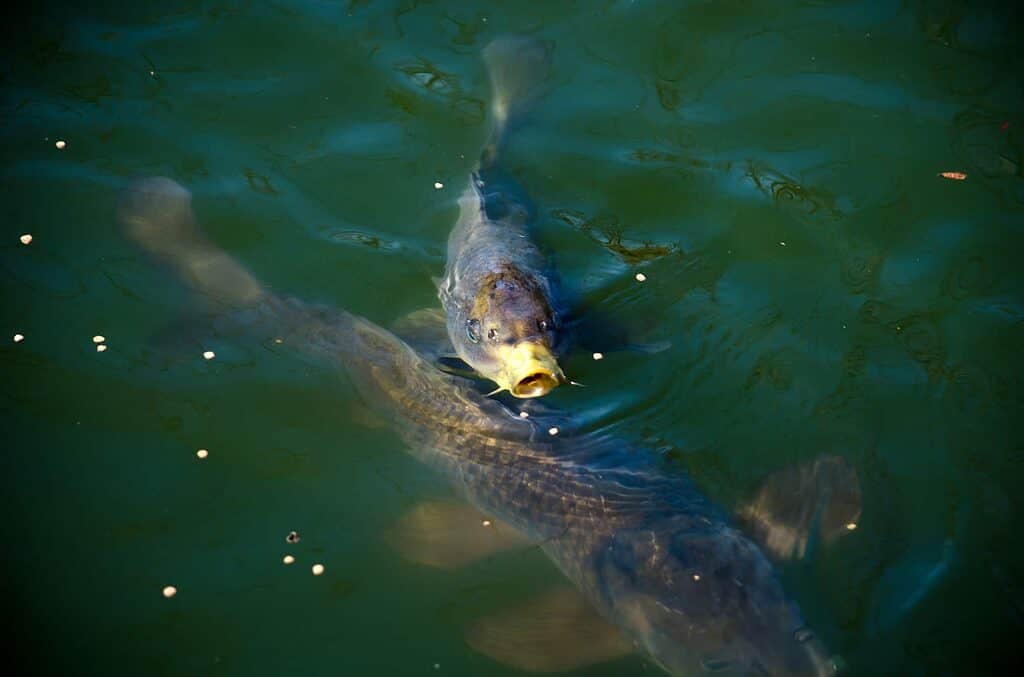
Boilies
Finally – the bait that changed carp fishing forever!
Let’s get straight to it – boilies are by far the best carp bait out there! Highly selective, available in infinite variations, and adapted for every imaginable situation. They have become the very essence of modern carp fishing.
Boilies have a unique characteristic: they are made almost exclusively for carp fishing, and they have an insane success percentage when it comes to targeting carp. Even in a lake filled with other fish!
Due to their size and hardness, smaller fish like bream will have a very hard time eating them. Using 12, 15, and 18mm boilies as a hookbait, you can cast out a bait that cannot be eaten by anything other than large carp!
Available in various diameters and immense taste variations, there is a boilie for every situation imaginable. There are even boilies specially made for cold-water fishing (like the famous Mulberry Plum)! You can also purchase cheaper boilies made for feeding, and specially prepared boilies made to be used only as bait.
Boilies are not only famous because of their success as bait but they are also quite easy to produce at home. This makes them both available and affordable.
Boilies are made from dough, often based on fishmeal or bird food – but with a lot of other variations. The dough is shaped into boilies and then boiled until boilies acquire the needed hardness. The final product is soft enough to be drilled and baited on hair, but hard enough to endure all kinds of underwater attacks while waiting for the carp!
Tip: Bird Food-based boilies are more suited to colder months and the fishmeal ones work better in the warmer periods.
Boilies can be a buoyant option or a bottom type. Buoyant boilies are called pop-ups and are essential in making balanced baits or raising the bait from the bottom.
When selecting a boilie you will find two distinct types – frozen and shelf life. Both have their good uses but frozen boilies prove better on many occasions as they are far fresher.
Frozen boilies are a lot softer and easier for the carp to digest and they are usually of higher quality due to freshness. However, shelf life boilies will definitely catch carp under the right conditions and they are not to be forgotten about.
Tip: Shelf life boilies are often referred to as readymade boilies, they are easier to store and keep longer.
The only downside of using a boilie is when fishing on wild water. Wild carp have no idea what boilie is, and will rarely go for it on the first encounter. When fishing on wild waters, it takes some time to adapt the carp to the new food offering – but once they understand boilies are food, the fishing will kick off!
Boilies have an impossibly vast underlying story, and it is very hard to cover even a part of it in this article. But it is enough to know that they catch carp, and there are no better alternatives out there that can be compared with boilies!
If you would like to learn more about carp fishing with boilies, then please check out my in-depth guide on boilie fishing, including types of boilies, tips, and tactics on how to use them!
What Are The Main Factors Which Impact Catching Carp?
There are multiple factors in play that can affect your catch rate.
- Weather – Pressure, temperature, wind direction, sunny or overcast
- Time of the year and day – Colder months are notoriously more difficult
- Location and choice of swim – Understand the best places to go and which swims are more prolific
- Competitiveness of the fishery – A heavily fished lake is harder to catch carp and a lot of bait has already been introduced.
- And of course…….Your choice of bait!
There are dozens of additional factors which I couldn’t start to add here but experience and knowledge are key to improving your quantity and the size of the carp you catch. Trying different ideas will result in confidence and your ability to get more bites and more fish!
Final Thoughts
With a huge amount of options available to choose which bait to use, it is an individual choice on which ones you will use. A selection of baits is critical to have available, as many factors change what works and what doesn’t!
It is most often that a simple, proven approach will catch fish when everything else fails. Always remember what worked yesterday may not work today! – and that is why so many anglers love carp fishing so much!
If you are looking for more information on fishing bait, please check out my entire collection of other bait articles here!
- Winter Lure Fishing For Catching Zander In Rivers & Lakes - January 22, 2022
- What Is Bolognese Fishing? The Ultimate Guide To Bolo Fishing - December 29, 2021
- How to Catch Carp – The Best Carp Hookbaits Revealed - November 17, 2021


